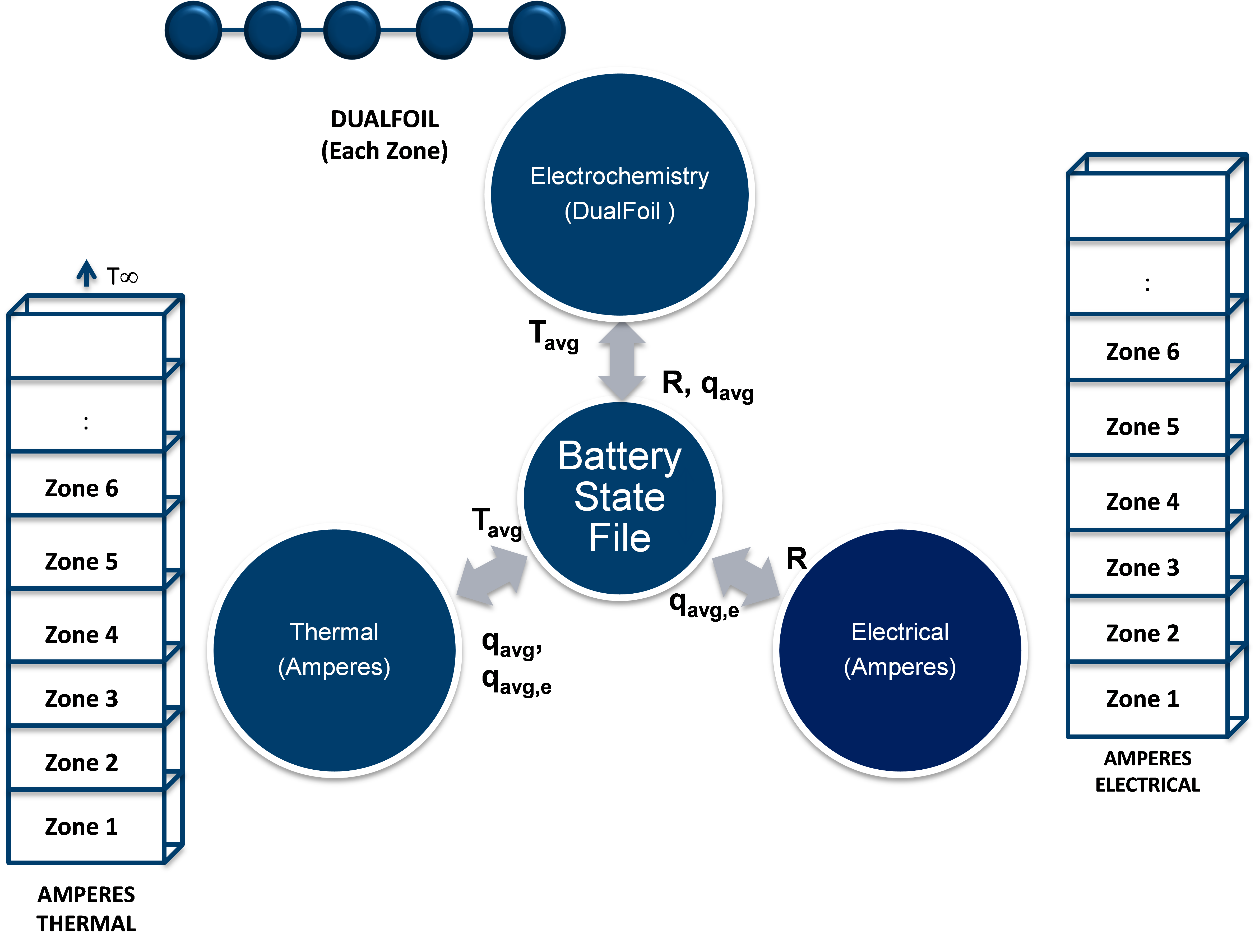Battery Markup Language (BatML) Standard
Example Models for Batteries
Example 2: Unrolled Cell (Electrochemical/Electrical/Thermal)
In this example (located in the VIBE repository at trunk/examples/case2/) we have added the current collectors to the previous example configuration. The main model properties are provided below. The corresponding schematic for the model’s battery state is given in Fig. 3. Electrical resistance (from DualFoil) and heat source (from Electrical) is stored in the battery state and this information is used by the electrical and thermal component models, respectively. The simulation results are shown in Fig. 4. Comparing Fig. 4 and Fig. 2, we can see a decrease in the temperature rise in the case when current collectors are present because they promote faster dissipation of heat generated by electrochemistry.
| Physical Properties | Units | Total | Carbon Electrode (Anode) | Lithium Electrode (Cathode) | Al Foil | Cu Foil | Separator |
|---|---|---|---|---|---|---|---|
| Density | kg/m3 | 2500 | 1500 | 2700 | 8960 | 1200 | |
| Heat Capacity | J/Kg-K | 700 | 700 | 900 | 385 | 700 | |
| Thermal Conductivity | W/m-K | 0.01 | 0.01 | 238 | 398 | 0.01 | |
| Electrical Conductance | S/m | 0.0051 | 0.0051 | 383x105 | 633x105 | 0.0051 | |
| (rCp) avg | J/m3-K | 175x104 | |||||
| Height | m | 0.5 | |||||
| Width | m | 0.024 | |||||
| Thickness | m | 394x10-6 | |||||
| Current Density | A/m2 | 35 | |||||
| Convective Heat Transfer Coefficient | W/m2-K | 25 |

Figure 3: Battery state file for example 2.

Figure 4: Sample results for example 2 comparing the temperature to that of case 1.